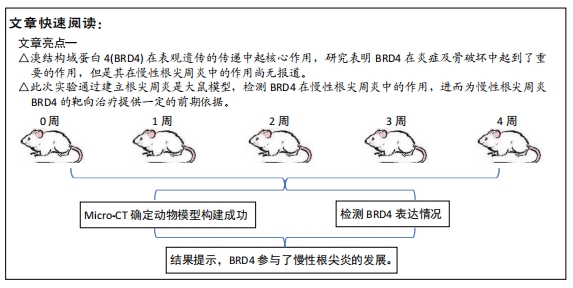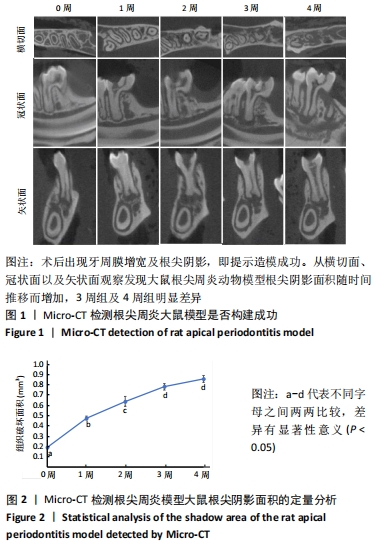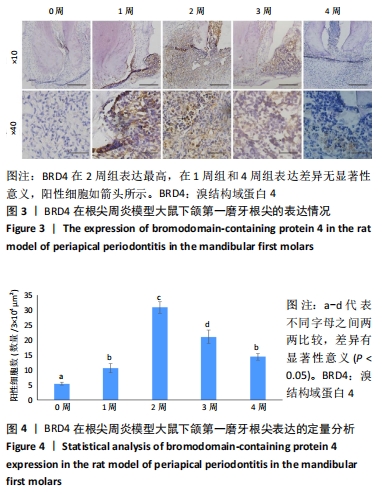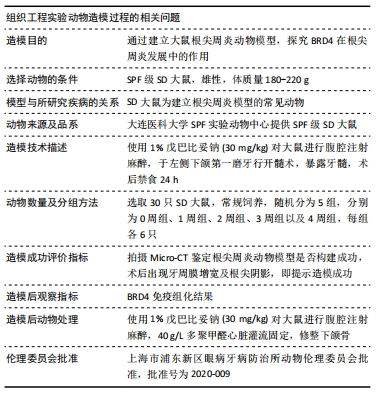[1] BEST S, AMMONS CL, KARUNANAYAKE GA, et al. Outcome Assessment of Teeth with Necrotic Pulps and Apical Periodontitis Treated with Long-term Calcium Hydroxide. J Endod. 2021;47(1):11-18.
[2] CORAZZA BJM, MARTINHO FC, KHOURY RD, et al. Clinical influence of calcium hydroxide and N-acetylcysteine on the levels of resolvins E1 and D2 in apical periodontitis. Int Endod J. 2021;54(1):61-73.
[3] HUANG L, WU H, WU Y, et al. Pcsk9 Knockout Aggravated Experimental Apical Periodontitis via LDLR. J Dental Res. 2021:220345211015128.
[4] KARAMIFAR K, TONDARI A, SAGHIRI MA. Endodontic Periapical Lesion: An Overview on the Etiology, Diagnosis and Current Treatment Modalities. Eur Endod J. 2020;5(2):54-67.
[5] KARTEVA T, MANCHOROVA-VELEVA N. The Role of the Immune Response in Chronic Marginal and Apical Periodontitis. Folia Medica. 2020;62(2):238-243.
[6] KÜCHLER EC, HANNEGRAF ND, LARA RM, et al. Investigation of Genetic Polymorphisms in BMP2, BMP4, SMAD6, and RUNX2 and Persistent Apical Periodontitis. J Endod. 2021;47(2):278-285.
[7] MACHADO FP, KHOURY RD, TOIA CC, et al. Primary versus post-treatment apical periodontitis: microbial composition, lipopolysaccharides and lipoteichoic acid levels, signs and symptoms. Clin Oral Invest. 2020;24(9): 3169-3179.
[8] PARK OJ, JEONG MH, LEE EH, et al. A Pilot Study of Chronological Microbiota Changes in a Rat Apical Periodontitis Model. Microorganisms. 2020;8(8):1174.
[9] POORNIMA L, RAVISHANKAR P, ABBOTT PV, et al. Impact of root canal treatment on high-sensitivity C-reactive protein levels in systemically healthy adults with apical periodontitis - a preliminary prospective, longitudinal interventional study. Int Endod J. 2021;54(4):501-508.
[10] SHEN Z, SILVA RM. MicroRNAs: emerging players in apical periodontitis. J Appl Oral Sci. 2021;29:e20201058.
[11] LOGANATHAN SN, TANG N, FLEMING JT, et al. BET bromodomain inhibitors suppress EWS-FLI1-dependent transcription and the IGF1 autocrine mechanism in Ewing sarcoma. Oncotarget. 2016;7(28):43504-43517.
[12] JACQUES C, LAVAUD M, GEORGES S, et al. BET bromodomains’ functions in bone-related pathologies. Epigenomics. 2020;12(2):127-144.
[13] CAPUTO VS, TRASANIDIS N, XIAO X, et al. Brd2/4 and Myc regulate alternative cell lineage programmes during early osteoclast differentiation in vitro. iScience. 2021;24(1):101989.
[14] JIANG Y, ZHU L, ZHANG T, et al. BRD4 has dual effects on the HMGB1 and NF-κB signalling pathways and is a potential therapeutic target for osteoarthritis. Biochimica et biophysica acta. Mol Basis Dis. 2017;1863(12):3001-3015.
[15] WANG K, ZHAO Z, WANG X, et al. BRD4 induces osteogenic differentiation of BMSCs via the Wnt/β-catenin signaling pathway. Tissue Cell. 2021;72: 101555.
[16] HUANG Z, YANG R, ZHANG L, et al. BRD4 inhibition alleviates mechanical stress-induced TMJ OA-like pathological changes and attenuates TREM1-mediated inflammatory response. Clin Epigenetics. 2021;13(1):10.
[17] WANG J, HU J, CHEN X, et al. BRD4 inhibition regulates MAPK, NF-κB signals, and autophagy to suppress MMP-13 expression in diabetic intervertebral disc degeneration. FASEB J. 2019;33(10):11555-11566.
[18] DONG X, HU X, BAO Y, et al. Brd4 regulates NLRC4 inflammasome activation by facilitating IRF8-mediated transcription of Naips. J Cell Biol. 2021;220(3): e202005148.
[19] WU T, KAMIKAWA YF, DONOHOE ME. Brd4’s Bromodomains Mediate Histone H3 Acetylation and Chromatin Remodeling in Pluripotent Cells through P300 and Brg1. Cell Rep. 2018;25(7):1756-1771.
[20] NIU N, SHAO R, YAN G, et al. Bromodomain and Extra-terminal (BET) Protein Inhibitors Suppress Chondrocyte Differentiation and Restrain Bone Growth. J Biol Chem. 2016;291(52):26647-26657.
[21] WANG FS, CHEN YS, KO JY, et al. Bromodomain Protein BRD4 Accelerates Glucocorticoid Dysregulation of Bone Mass and Marrow Adiposis by Modulating H3K9 and Foxp1. Cells. 2020;9(6):1500.
[22] HONG J, LI S, MARKOVA DZ, et al. Bromodomain-containing protein 4 inhibition alleviates matrix degradation by enhancing autophagy and suppressing NLRP3 inflammasome activity in NP cells. J Cell Physiol. 2020; 235(7-8):5736-5749.
[23] CAREY HA, HILDRETH BE, 3RD, GEISLER JA, et al. Enhancer variants reveal a conserved transcription factor network governed by PU.1 during osteoclast differentiation. Bone Res. 2018;6:8.
[24] PARADISE CR, GALVAN ML, KUBROVA E, et al. The epigenetic reader Brd4 is required for osteoblast differentiation. J Cell Physiol. 2020;235(6):5293-5304.
[25] WIJNEN AJ, WESTENDORF JJ. Epigenetics as a New Frontier in Orthopedic Regenerative Medicine and Oncology. J Orthop Res. 2019;37(7):1465-1474.
[26] MING D, XINXIN Y, WANFANG C, et al. Osteopontin Promotes Bone Destruction in Periapical Periodontitis by Activating the NF-κB Pathway. Cell Physiol Biochem. 2018;49(3):884-898.
[27] SIRIN DA, OZCELIK F, ERSAHAN S, et al. The importance of inflammatory biomarkers, IL-6 and PAPP-A, in the evaluation of asymptomatic apical periodontitis. Odontology. 2021;109(1):250-258.
[28] VELOSO P, FERNÁNDEZ A, TERRAZA-AGUIRRE C, et al. Macrophages skew towards M1 profile through reduced CD163 expression in symptomatic apical periodontitis. Clin Oral Invest. 2020;24(12):4571-4581.
[29] DE ROSSI A, HUAMÁN SD, LEÓN JE, et al. Fibroblast growth factor receptor 2 expression in apical periodontitis in mice. Int Endod J. 2020;53(8):1111-1119.
[30] BARBOSA-RIBEIRO M, ARRUDA-VASCONCELOS R, LOUZADA LM, et al. Microbiological analysis of endodontically treated teeth with apical periodontitis before and after endodontic retreatment. Clin Oral Invest. 2021;25(4):2017-2027.
[31] BARCELOS RCS, ROSA HZ, ROVERSI K, et al. Apical periodontitis induces changes on oxidative stress parameters and increases Na(+)/K(+)-ATPase activity in adult rats. Arch Oral Biol. 2020;118:104849.
[32] TALPAZ M, KILADJIAN JJ. Fedratinib, a newly approved treatment for patients with myeloproliferative neoplasm-associated myelofibrosis. Leukemia. 2021; 35(1):1-17.
[33] DEEPAK V, WANG B, KOOT D, et al. In silico design and bioevaluation of selective benzotriazepine BRD4 inhibitors with potent antiosteoclastogenic activity. Chem Biol Drug Design. 2017;90(1):97-111.
[34] SU Y, SONG X, TENG J, et al. Mesenchymal stem cells-derived extracellular vesicles carrying microRNA-17 inhibits macrophage apoptosis in lipopolysaccharide-induced sepsis. Int Immunopharmacol. 2021;95:107408.
[35] FERNÁNDEZ A, VELOSO P, ASTORGA J, et al. Epigenetic regulation of TLR2-mediated periapical inflammation. Int Endod J. 2020;53(9):1229-1237.
[36] FREIRE MS, OLIVEIRA NG, LIMA SMF, et al. IL-4 absence triggers distinct pathways in apical periodontitis development. J Proteomics. 2021;233:104080.
[37] GOLDMAN E, REICH E, ROSHIHOTZKI B, et al. A Mouse Model for Studying the Development of Apical Periodontitis with Age. Cells. 2021;10(3):671.
[38] MING D, HAIWEI J, MEINA Z, et al. The potential effect of Bruton’s tyrosine kinase in refractory periapical periodontitis. Biomed Pharmacother. 2019; 112:108710.
[39] DEY A, YANG W, GEGONNE A, et al. BRD4 directs hematopoietic stem cell development and modulates macrophage inflammatory responses. EMBO J. 2019;38(7):e100293.
[40] ZHU W, WU RD, LV YG, et al. BRD4 blockage alleviates pathological cardiac hypertrophy through the suppression of fibrosis and inflammation via reducing ROS generation. Biomed Pharmacother. 2020;121:109368.
[41] REN Y, ZHANG Y, WANG Z, et al. Role of Brd4 in the production of inflammatory cytokines in mouse macrophages treated with titanium particles. Can J Physiol Pharmacol. 2019;97(11):1028-1034.
[42] BAUD’HUIN M, LAMOUREUX F, JACQUES C, et al. Inhibition of BET proteins and epigenetic signaling as a potential treatment for osteoporosis. Bone. 2017; 94:10-21.
[43] GORVIN CM, LOH NY, STECHMAN MJ, et al. Mice with a Brd4 Mutation Represent a New Model of Nephrocalcinosis. J Bone Miner Res. 2019;34(7): 1324-1335.
[44] BADRELDIN AA, BAGHERI L, ZHANG B, et al. Relative mRNA and protein stability of epigenetic regulators in musculoskeletal cell culture models. Gene. 2021;766:145032.
[45] COLLINS TA, HATTERSLEY MM, YATES J, et al. Translational Modeling of Drug-Induced Myelosuppression and Effect of Pretreatment Myelosuppression for AZD5153, a Selective BRD4 Inhibitor. CPT Pharmacometrics Syst Pharmacol. 2017;6(6):357-364.
[46] REID S, FINE N, BHOSLE VK, et al. Inhibition of BRD4 Reduces Neutrophil Activation and Adhesion to the Vascular Endothelium Following Ischemia Reperfusion Injury. Int J Mol Sci. 2020;21(24):9620.
[47] GHAYOR C, GJOKSI B, DONG J, et al. N,N Dimethylacetamide a drug excipient that acts as bromodomain ligand for osteoporosis treatment. Sci Rep. 2017;7: 42108.
|



